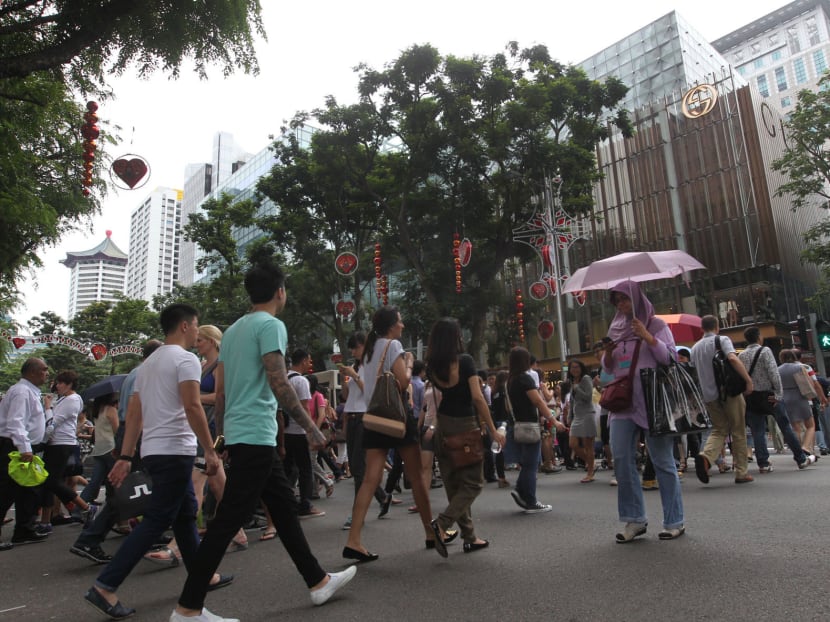Include ‘them’ in ‘our’ network of relationships
Only two weeks ago, I attended a particular event as a PhD student. It was a seminar paying tribute to John Gumperz, one of the founders of modern sociolinguistics, who had passed away in March.
Only two weeks ago, I attended a particular event as a PhD student. It was a seminar paying tribute to John Gumperz, one of the founders of modern sociolinguistics, who had passed away in March.
While there might be some truth in academics and our ivory towers, the topics discussed on this occasion were wholly relevant to Singapore society today.
Gumperz pioneered the field of interactional sociolinguistics — the study of how words, intonation and even body posture in human interaction not only served to convey meaning, but also index our social standing, value systems and experiences of the world.
When people in a conversation come from different cultural settings or hold different world views, they might misinterpret or ignore some of these subtle cues in one another’s speech, leading to misunderstanding. Gumperz’s research in various institutions and workplaces has led to the development of educational toolkits for human resource managers in interview training, for example, so that they might become more attuned to and hence compensate for these cross-cultural differences.
We might see the potential value of his legacy in our own cross-cultural encounters in Singapore, especially with new immigrants.
At the grassroots level, do we judge too quickly in conversations and dismiss immigrants as rude and loud individuals? In institutional settings, do immigrants truly understand their encounters with people in authority, such as their job interviewers, workplace supervisors or the police?
Why does a waitress resort to Mandarin instead of English to serve customers? What do they really mean when they say “yes” to a question?
We must take care that these cross-cultural encounters do not become repeated instances of misunderstanding or be construed simply as new immigrants not wanting to fit in.
COMMUNICATIVE EXPERIENCE
Gumperz argued that there is a communicative dimension to discrimination. Racial inequality is not merely the product of prejudice, but arises from the complex inter-relationship of values and ideology brought into the encounter and the ways in which people make sense to one another (or not) in the moment.
The ritualised failure to enter and understand one another’s subjective world might escalate to stereotyping over time and lead to discriminatory practices against the other.
However, it would also be quite wrong to perceive the source of cross-cultural misunderstanding to be cultural differences per se (i.e. that they are not the same as us). The kind of contextual cues we share in interaction are not the result of belonging to a particular ethnic group or community, but the result of participation in “networks of relationships”, which socialise individuals into similar communicative practices.
In Gumperz’s own words, “it is long-term exposure to similar communicative experience in institutionalised networks of relationships, and not language or community membership as such that lies at the root of shared culture and shared inferential practice”.
NEGATIVE STEREOTYPING
The way I see it, Gumperz has taught us two lessons. For one, we should never take for granted the fact that most immigrants and citizens in Singapore appear to fit existing racial categories of Chinese, Malay or Indian.
Be they talented migrants, unskilled labourers or Singapore-born citizens, their supposed ethnicity counts for nothing if our “communicative experiences in networks of relationships” are mutually exclusive and non-coterminous.
Indeed, it might be the unskilled immigrants, partly due to their segregation from the rest of Singapore society, who are particularly vulnerable to cross-cultural misunderstandings and negative stereotyping.
Second, processes of integration and developing social cohesion are a two-way street.
Yes, newcomers must adapt to the Singaporean way of life, though we should be willing to accommodate and negotiate our differences as well. Equal and happy interaction with others (immigrant/Chinese/Malay/Indian or not) really depends on how willing we are to enter their subjective world and welcome them into ours.
We might leave the obscure analytics and conceptual frameworks to the academics — but how we interact with the others and include them in our “networks of relationships” is surely a choice all of us can make.
ABOUT THE AUTHOR:
Luke Lu is a PhD candidate at the Centre for Language, Discourse and Communication at King’s College London.







